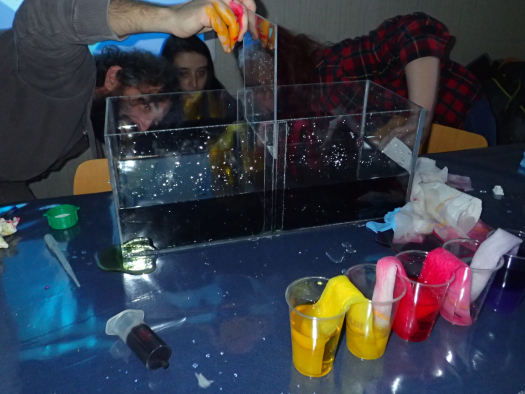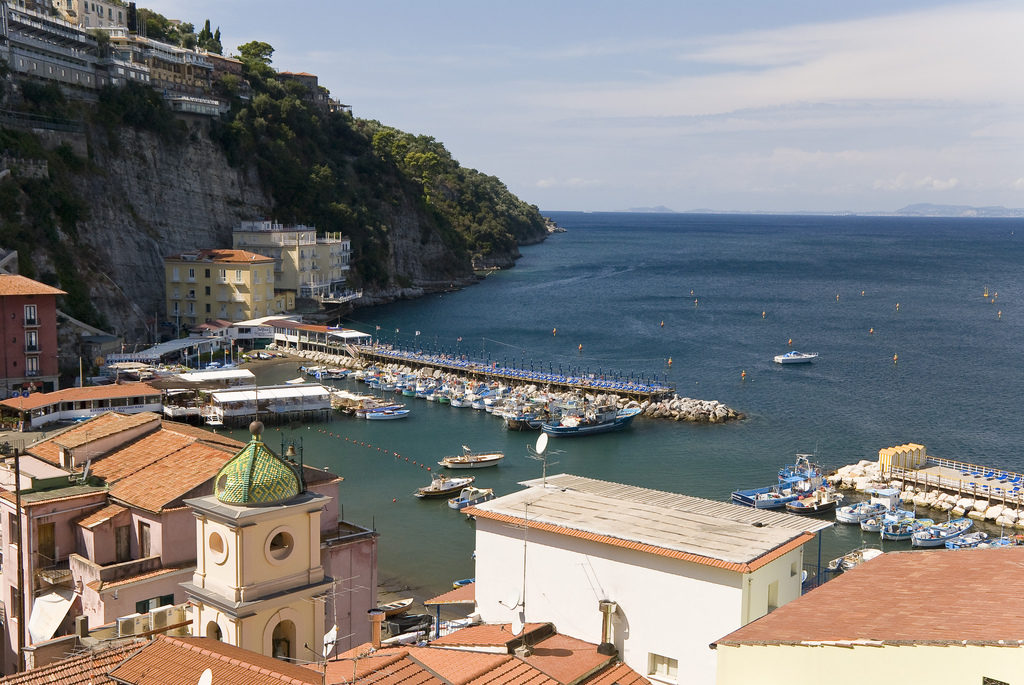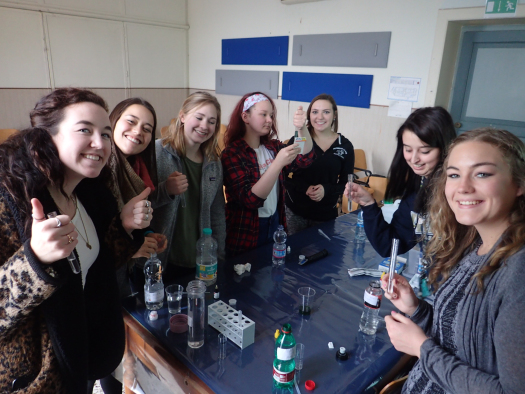Studyng Marine Biology
WRITTEN BY ERIN KNIGHT, SPRING 2017
The first three weeks in Sorrento, Italy, have been interesting, especially when it comes to one of my classes, Marine Biology, which focuses on studying the body of water nearest to Sorrento. Thus far, we have not studied the Bay of Naples at an in-depth level. Instead, we have been learning some general topics for all marine bodies of water.
On the first day of class, we started our discussion by reviewing the history of marine biology. Marine biology originates from fishing. Wooden hooks, dating back to the Paleolithic period, have been found in Southeast Asia and elsewhere. Earlier findings include evidence of mollusc and crustacean harvesting. More modern marine biology developed in the Mediterranean Sea. Therefore, we are studying close at the heart of marine biology.
Around 1200 BCE, the Phoenicians were sailing around the Mediterranean sea. During this time, marine biology was essentially fishing and transportation. People were fishing for food and others were navigating around the area. They would have had to know a little about currents and water travel to be able to do this.
Aristotle, known as the father of marine biology, further increased our knowledge of the sea by being the first to identify and describe marine species. He also coined several new terms that helped to describe the anatomy of marine species.
After Aristotle, marine biology discoveries seemed to slow down until the Eighteenth Century, the beginning of modern marine biology. Most of the new information on the topic was discovered through explorations on boats around the world. For example, Charles Darwin spent three years traveling on a vessel called The Beagle, identifying a number of new species and sampling them for further review (A History, n.d.).
The second lesson of the course focused on the topography of the earth and the ocean. The majority of the earth is covered in water, deeming marine biology an important field of study.
We started our discussion of the ocean by learning about the crust. There are two types of crust in the ocean: continental and oceanic. Continental crust is thick, usually between 20-70 km, and old. Oceanic crust, on the other hand, is thinner, between 2-5 km, and fairly new compared to continental crust. Oceanic crust is the crust at the ocean floor. It is made at the mid-ocean ridge and destroyed at trenches. Continental crust is the crust which forms large land masses above sea level. This crust consists of the continental shelf and continental slope. The shelf is a short stretch of land that is relatively shallow. The shelf ends when there is a steeper drop-off of land called the slope which is the area where sediments and dead matter settle. The slope leads to the ocean floor.

The lesson delved into the details about tectonic plates. Our earth is split into several parts. We live on the outermost layer, the crust. Inside the earth is the moho, the mantle, as well as the outer and inner cores. The moho is a boundary between the crust and mantle where the solid crust begins to melt into liquid magma. The liquid magma is what allows the movement of the tectonic plates, which results in continental drift.
Continental drift is the slow movement of the continents. Yearly effects are small but, over thousands and millions of years, the change can be significant.
It is theorized that there was once a large supercontinent, Pangea, which split apart into several continents. We can see evidence of continental drift in fossils and in the underwater volcanoes.
Tectonic plates are responsible for other natural weather events as well. For instance, subduction is occurs when the crust of one tectonic plate moves under another and breaks, causing earthquakes, tsunamis, and other events. The plates can consist of oceanic crust, continental crust, or a combination of the two which explains the presence of mountains both above and below sea level. When continental and oceanic crust converge, oceanic crust is destroyed because it is less dense than continental crust.

After studying the crust, we moved on to discuss the properties of water, a relevant topic because we were able to test the sea water of Marina Grande, the small fishing village located below Sant’Anna Institute. We first went over basics of water properties. Water is a distinct molecule, mainly because of its polarity which allows hydrogen bonding.
Hydrogen bonding is a weak attraction between the oxygen atom of one water molecule and the hydrogen atom of another water molecule. Although one single hydrogen bond may be weak, many of them together create a force that gives water several of its unique properties. Such properties are the reason for the existence of all life, above and below sea level.
The first of these properties is the high specific heat of water. Much more energy is needed to change the temperature of water than to change the temperature of a metal. This is good for organisms living in the sea because they can deal with a more stable water temperature.
Water also has cohesive and adhesive properties. The cohesive properties keep water together as a unit, making it harder to separate individual molecules. The adhesive properties of water allow it to stick to other polar surfaces. Both the cohesion and adhesion help animals and plants use water within their bodies.
Sea water has other properties, not all of which I can go into in this post. There are many ions in seawater. These come from different processes that occur within the atmosphere. For example, sodium and magnesium ions come from the weathering of rocks and are carried from rivers and deposited into the sea. Some ions even come from volcanic eruptions, which rain or flow into places like the Mediterranean Sea.
Density is another key feature of seawater. Density increases with decreases in temperature and increases in salinity. Water at the bottom of the ocean is denser than the water towards the top. Density and pressure go hand-in-hand. These are essential for animals that move between the different levels of the ocean. They must have specific traits that allow them to change between the different pressures and temperatures in the water.

Another major topic we discussed in class was the movement of water within and between oceans: currents. There are both wind-driven currents and density-controlled currents. The wind-driven currents affect the surface of the water, moving clockwise in the Northern Hemisphere and counterclockwise in the Southern Hemisphere. The wind currents cause spiral effects in the water below the surface. Deep-water currents are caused by density changes in water. These currents are responsible for the majority of the water within the oceans (Horton, 2008).
More relevant to the Mediterranean Sea is the topic of waves. Waves in the Mediterranean are not as large as waves in the Atlantic Ocean. Mediterranean waves include mechanical waves which move through a medium and are wind powered. Other waves can be powered by the gravitational effects of the moon on the earth, causing tides (Why does, 2013).
Studying marine biology is fascinating and fun, especially because I study close to important bodies of water like the Bay of Naples and the Mediterranean Sea.





